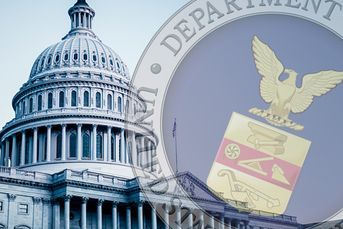Don’t write off ESG investments out of habit — the demand is real

There is appetite from 401(k) participants, and options to feed them.
Opportunities in the financial services industry rarely look as inviting as the current market for investments focused on environmental, social and corporate governance factors.
At around $12 trillion, which is up 38% from two years ago, ESG strategies now make up about a quarter of all U.S. assets under professional management.
The growth is driven largely by people under age 50, especially women, who have become faithful proponents of ESG-related investments.
Yet the majority of investors, who do most of their investing through company-sponsored retirement plans, have very little access to ESG strategies.
As senior columnist Jeff Benjamin reported in last week’s cover story, it’s estimated that fewer than 8% of company-sponsored retirement plans offer even a single ESG fund in their investment lineups.
Stack that against a recent Natixis survey showing that 74% of plan participants want access to ESG funds in their retirement-savings plans, and it looks like a no-brainer for the financial planning industry.
In baseball parlance, this kind of opportunity might even be referred to as a hanging curveball waiting to be hit out of the park.
Companies that sponsor retirement plans may have shied away from such funds in the past because of their cost and performance, as well as uncertainty about the regulatory environment.
But while ESG funds have had a reputation as expensive underperformers, recent data from Lipper suggest that’s not the case.
For example, Lipper shows ESG equity funds have returned 3.92% on average annually in the five years through 2018, which is the same as the five-year return on non-ESG equity funds. ESG bond funds averaged 2.22% over that period, while non-ESG bond funds averaged 2.32%.
In the mixed-asset fund category, ESG funds averaged 3.59%, while non-ESG funds averaged 3.36%.
Even higher fund expenses, once seen as a reality of investing for a good cause, no longer hold up as a reason to avoid ESG funds.
Expenses on par
To be clear, for the sake of simplicity, we’re comparing big broad averages of more than 23,000 non-ESG funds with a more concentrated mix of 870 ESG funds. But, according to Lipper, the average expense ratio of ESG equity funds is 1.03%, which compares to 1.12% for non-ESG equity funds.
On the regulatory front, the Department of Labor provided guidance in 2015 that said taking ESG considerations into account when selecting plan investments was within the bounds of a sponsor’s fiduciary duties. But last April, additional DOL guidance said the screening of funds should be the same for ESG and non-ESG investments.
That latest round of guidance doesn’t mean the DOL is standing in the way of plan sponsors who want to include ESG funds on plan menus though. As Mr. Benjamin reported in his cover story, plan sponsors and the financial advisers working with them should just keep in mind that the evaluation of funds for consideration on a retirement plan menu needs to be consistent.
For financial advisers already helping sponsors manage their retirement plans or those who want to get a foot in the door to that potentially lucrative market, a focus on ESG strategies could be advantageous.
The appetite from employees is there, the products and strategies will pass through most screens, and the regulators are not blocking the path.
Nobody expects a company to exercise a clean sweep of its retirement-plan investments menu and convert to an all-ESG lineup.
But a savvy financial adviser would add a lot of value by offering some ESG funds and underscoring the benefits to employers of using them as a tool for recruiting and retaining employees.
Learn more about reprints and licensing for this article.








